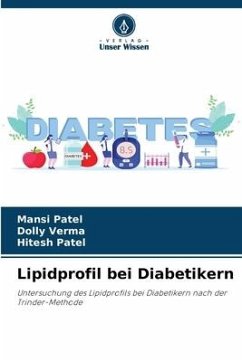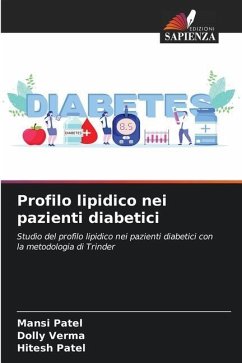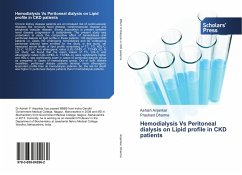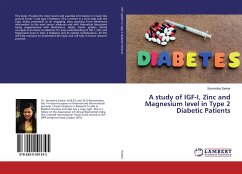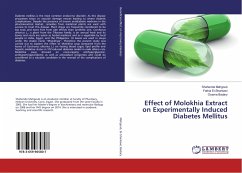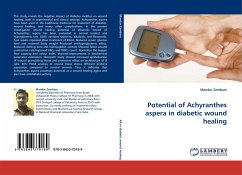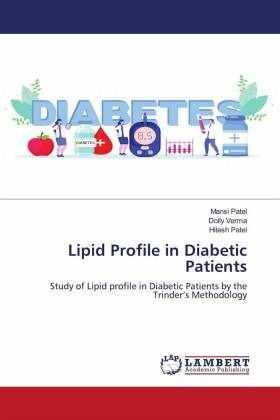
Lipid Profile in Diabetic Patients
Study of Lipid profile in Diabetic Patients by the Trinder's Methodology
Versandkostenfrei!
Versandfertig in 6-10 Tagen
29,99 €
inkl. MwSt.

PAYBACK Punkte
15 °P sammeln!
Diabetes and Lipid Profile.UserDiabetes mellitus (DM) is characterized by persistent hyperglycemia and disruptions in carbohydrate, lipid, and protein metabolism caused by abnormalities in insulin production, insulin action, or both. Type 2 diabetes impacted approximately 462 million people in 2017, accounting for 6.28 % (4.4 % of those aged 15-49 years, 15 % of those aged 50-69 years, and 22 % of those aged 70+), or a prevalence rate of 6059 cases per 100,000. Diabetes will most certainly be the primary cause of illness and mortality as its prevalence rises throughout the world. Diabetes-rela...
Diabetes and Lipid Profile.UserDiabetes mellitus (DM) is characterized by persistent hyperglycemia and disruptions in carbohydrate, lipid, and protein metabolism caused by abnormalities in insulin production, insulin action, or both. Type 2 diabetes impacted approximately 462 million people in 2017, accounting for 6.28 % (4.4 % of those aged 15-49 years, 15 % of those aged 50-69 years, and 22 % of those aged 70+), or a prevalence rate of 6059 cases per 100,000. Diabetes will most certainly be the primary cause of illness and mortality as its prevalence rises throughout the world. Diabetes-related chronic hyperglycemia is linked to long-term damage, dysfunction, and disturbance in the functioning of multiple organs, most notably the eyes, kidneys, nerves, heart, and blood vessels. Due to atherogenic irregularities and dyslipidemia, patients with type 2 diabetes are more likely to develop cardiovascular disease. Diabetes dyslipidemia often presents as elevated low density lipoprotein cholesterol (LDL-C), decreased high density lipoprotein cholesterol (HDL-C), or higher triglyceride (TG) levels. HbA1c (glycated hemoglobin) is a commonly used measure for long-term glycemic management.




